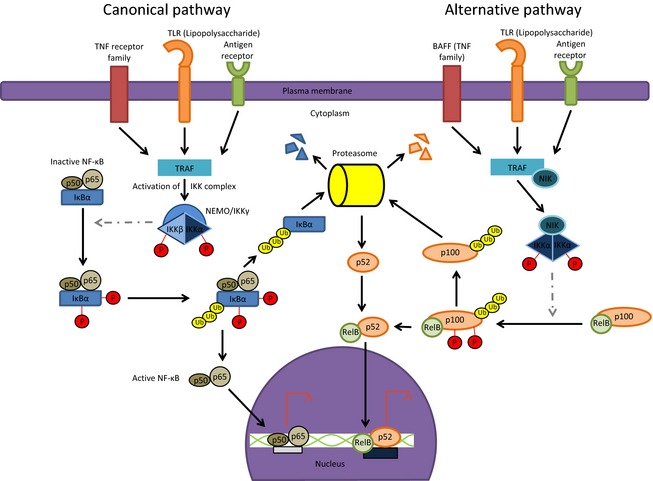Figure 1.

The canonical and noncanonical NF‐κB pathways. The canonical pathway is stimulated by a variety of signals that are detected by cell surface receptors such as TLRs, TNFRs, and antigen receptors. The signal is transduced to the adaptor protein TRAF such that TBK‐1 phosphorylates IKKβ and IKKα. IKK‐mediated IκBα phosphorylation is followed by proteasomal degradation resulting in nuclear translocation of the NF‐κB heterodimer p65/p50 to activate or repress target gene expression. The noncanonical NF‐κB pathway is triggered by stimuli such as lipopolysaccharide. In this pathway, NIK phosphorylates the homodimer IKKα which mediates the phosphorylation and ubiquitylation of p100/RelB. Consequently, p100 is processed to the smaller isoform p52 and the p52/RelB heterodimer translocates to the nucleus to activate or repress target gene expression.
